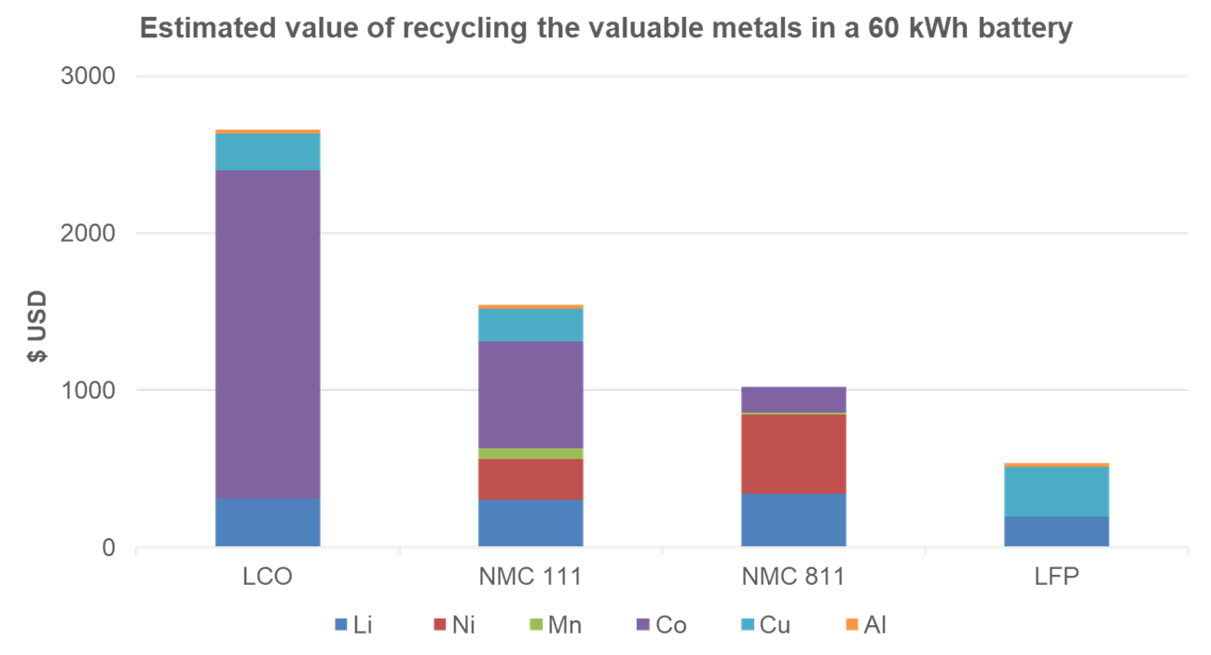Despite the impact of Covid-19, substantial volumes of Li-ion batteries will soon be reaching their end-of-life. A new IDTechEx report, “Li-ion Battery Recycling: 2020-2040” estimates that 2020 will see 330 kt of waste Li-ion battery. The majority of this will derive from consumer electronics. However, it is the sheer volume of end-of-life electric vehicle batteries which will be problematic if not properly dealt with, but there are several factors which suggest the recycling market will grow to meet this requirement.
Q2 2020 hedge fund letters, conferences and more
Minimize Supply Chain Risk
The large electric vehicle markets of Europe and the USA are increasingly concerned with the implications of relying on external raw material and battery supplies and are actively seeking to develop a domestic supply of critical materials, including those present in Li-ion batteries. While the US is home to some key material resources such as graphite and lithium, Europe is resource-poor. Recycling, of manufacturing scrap or end-of-life batteries, could therefore be a key resource allowing for some diversification of supply.
Capture Embedded Value
For the lithium-cobalt-oxide batteries used in the vast majority of consumer devices, the intrinsic value is relatively high, and recycling can be profitable from recovering cobalt and copper alone. Indeed, old consumer electronics could be a significant source of cobalt in the short-medium term, though hoarding, collection and distribution challenges make this unlikely. EV batteries on the other hand will be easier to track, collect and manage. However, the material value in an EV battery, on a $/kg basis, is lower due to the smaller amounts of cobalt used per kWh - and manufacturers are aiming to further reduce cobalt content, and even reduce nickel content further down the line. For a detailed analysis of the technology and chemistry trends in Li-ion batteries, please see the IDTechEx report: “Li-ion Batteries 2020-2030”. With this in mind, numerous companies are developing and commercializing various recycling processes, and combinations thereof, to recover more material from Li-ion cells in order to capture as much value as possible.
Estimated material value in a 60 kWh battery of different chemistries based on April 2020 metal prices. Source: IDTechEx Research - “Li-ion Battery Recycling: 2020-2040”
Li-Ion Battery Recycling - Improve The Sustainability
The importance of sustainable battery production should not be overlooked. The growth in electric vehicle and stationary storage markets are driven by environmental concerns. As the environmental and ethical impacts of Li-ion production are increasingly highlighted (sincerely or otherwise), so too does the importance of considering the entire life cycle of Li-ion batteries. Ensuring proper end-of-life management, for example via recycling, and using recycled material can help reduce energy and material requirements throughout the manufacturing chain and could help present companies with a marketing advantage. Europe has seen increasing interest in providing EVs with domestic supply of batteries, e.g. Northvolt, PSA-Saft, TerraE or Britishvolt. However, competing with Asian battery giants on volume and cost is likely to be a difficult proposition. Instead, ensuring minimal environmental footprint and visible supply chains can be a differentiator for them.
The IDTechEx report, “Li-ion Battery Recycling: 2020-2040” provides an overview of the current market landscape and trends in Li-ion battery recycling, as well as an in-depth analysis of key recycling processes and technologies. This report also provides an in-depth analysis of the Li-ion battery recycling value chain from a lifecycle perspective: from mining and processing, to battery materials and production, battery usage, throughout to recycling (or second life and recycling). The key market players in Li-ion battery recycling are also analyzed in the report.






